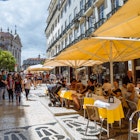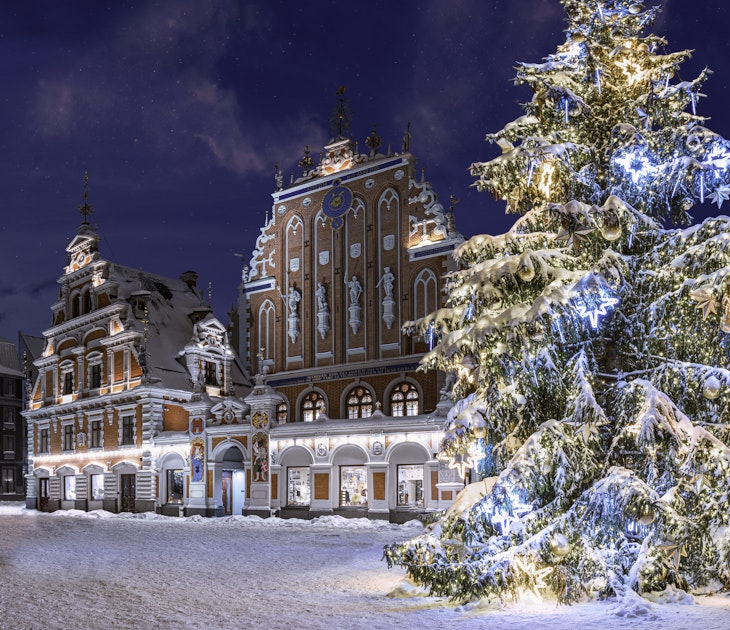
A Total Trip: What I spent in Tartu, Estonia - one of the European Capitals of Culture 2024

Jan 26, 2024 • 6 min read

Tartu is Estonia's second-largest city and cultural hub © Daniel James Clarke
In our A Total Trip series, writers document what they spent on a recent getaway. In this edition, Daniel James Clarke shows us how far his money went on a long weekend in Tartu, Estonia.
I’m a travel writer based in the Algarve, Portugal. Last year, keen to explore more of the Baltic and Nordic countries, my best friend and I embarked on an overland odyssey from Spain to Scandinavia. Our goal was to reach the Arctic Circle by train.
We’d originally overlooked Estonia’s second city but learned en route that Tartu and southeast Estonia would be one of 2024’s European Capitals of Culture. So we decided to take a detour and spend a weekend discovering the city’s cultural side.
- placement: fullWidth
- path: articles/in-content-top
- possible size: [970, 250], [970, 90], [728, 90], [300, 250], [320, 50], [1, 1],
- targeting:
{ "url": "spending-diaries-what-i-spent-three-days-tartu-estonia" }
Having traversed nearby Lithuania and Latvia a month earlier, I expected Estonia to be more expensive. But Tartu turned out to be surprisingly affordable. Here's what we spent.
Pre-trip spending
Accommodation: €94.50 for three nights in a private twin room (shared bathroom) at the modern and spotless Downtown Hostel.
Bus ticket: €7 from Valga on the Estonia-Latvia border.
Total: €54.25 each
Day-to-day spend

Thursday
Afternoon: Backpacks ditched, we walked towards the old town. The short stroll led us through Ülejõe Park, sprinkled with sculptures of Estonian cultural figures, and across the Emajõgi River to the Town Hall Square. This is the heart of Estonia’s oldest city, flanked by classical buildings. Decorations announcing #Tartu2024 were everywhere.
I’d been eager to see The Kissing Students fountain, Tartu’s romantic symbol, which stands in front of the Town Hall. Alas, it had been removed for renovation in preparation for a “mass kissing occasion” – one of the more curious events planned for 2024.
Dinner: Peckish, we walked through Pirogov Park to Püssirohukelder, an 18th-century gunpowder cellar. The cavernous hall is now a cracking pub and live music venue. We shared Baltic Sea blue mussels and mulgipuder, a hearty Estonian potato and smoked meat porridge served in a bread loaf. With an IPA and a Limonaad Traditsiooniline (a signature Estonian fizzy drink), the total was €14.25 each.
Total: €14.25
- placement: fullWidth
- path: articles/in-content-middle
- possible size: [970, 250], [970, 90], [728, 90], [300, 250], [320, 50], [1, 1],
- targeting:
{ "url": "spending-diaries-what-i-spent-three-days-tartu-estonia" }

Friday
Breakfast: Lured by the cozy, candle-lit interior of Crepp, we settled into plush window seats to people-watch. We ordered regional flavors: one galette stuffed with smoked salmon and a crêpe loaded with locally foraged bilberries, oozing with sweetness. Fueled with one French Press and a cappuccino, the check came to €14 each.
Morning sightseeing: We ambled through the old town towards column-fronted Tartu University, Estonia’s oldest, founded in 1632. Then, we peeked inside St. John’s Church (free), ignoring the tower to save €3. Beyond, a 17th-century bastion inside the Botanical Gardens (free) beckoned, followed by a coffee (€3) in Käkk&Mülä, a bakery-cum-bar with art-adorned brickwork and kaleidoscopic, comfy furnishings. Afterward, we continued to the wooden houses of the Supilinn neighborhood before we wandered back along the river.
We weren't hungry, so skipped lunch. Instead, I tried a honey-infused, mead-style beer (€4.80) brewed in nearby A Le Coq. It was a little sweet for my palate, so I declined another and we continued to Raamatukauplus Krisostomus bookshop to peruse piles of books instead.
Afternoon museum visit: It rained in the afternoon, so we took sanctuary in the University of Tartu Museum (€10), located in the restored section of a ruined Gothic cathedral. We spent a few hours learning about the city’s intellectual history and influential alumni, such as Nobel Prize-winning chemist Wilhelm Ostwald and Estonia’s current prime minister, Kaja Kallas. After daydreaming amongst the grand library’s volumes, we headed outside to ascend the cathedral’s tower (included). The views over the now roofless, semi-ruined nave were worth the climb.
Evening concert: I’d tried to book tickets for the Vanemuine Symphony Orchestra in advance. However, our visit coincided with the opening of the 154th concert season, so seats were scarce. Luckily, we snagged last-minute, reduced-price returns for €22 each at the box office. The acoustics inside the intimate Vanemuine – Estonia’s oldest theater – were excellent. There was complimentary champagne, but I think this was an opening season perk rather than the norm.
Dinner: Post-show, we dined in nearby Vilde Ja Vine. Homely, with retro light fittings and vintage armchairs, the food was spot on. By we’d become obsessed with the Baltic Sea’s smaller, sweet mollusks so we had two portions of fragrant mussels, a juicy burger, fried Baltic herring, and a liter of wine set for €30.50 each.
Total: €84.30

Saturday
Breakfast: We popped into Pihlaka, an Estonian chain known for its traditional cakes. Heaps of tempting treats made the decision difficult, so I asked the baker to choose. We had a slab of fluffy, sticky meekook (honey cake) and a slice of ploomikook (plum cake), plus a cappuccino and espresso. It cost us €2.98 each.
- placement: native
- path: articles/in-content-native
- possible size: [f, l],
- targeting:
{ "url": "spending-diaries-what-i-spent-three-days-tartu-estonia" }
Museum and lunch: We took the bus (€1.50) to the Estonian National Museum. At first, I thought the €14 museum entrance was steep. But I quickly realized this would be a full-day outing. Estonia’s largest museum is one of the most remarkable I’ve visited, using inventive technology throughout. Tickets act as magic wands, instantly translating information displays and video subtitles with a swipe. With another tap, your favorite facts and stories are saved to a personal URL, viewable at home.
From landmark events like The Baltic Chain (where two million people joined hands to form a 430-mile-long chain across Estonia, Latvia and Lithuania to seek independence from the USSR) to the introduction of e-Residency, every exhibit supplied fascinating insights into Estonia. It even told stories via people’s personal items, such as discreet protest knitwear and homemade vacuum cleaners. Interactive and sensory presentations kept the vast collection engaging.
We decided to eat lunch at the museum’s cafe, where the daily specials (roast pork with potatoes or a vegetarian option) were only €8. Afterward, we continued admiring traditional outfits and watched video stories narrated by Tartu’s residents. By the time we took the bus back (€1.50), my afternoon plan to visit Tartu Art Museum had faded with the sun, saving me €7.
Dinner and drinks: Before dinner, we stopped at cellar-like Pühaste Kelder, a local brewery-operated pub. Indecisive, we opted for the four-glass beer flight (€4 each), consisting of a guava Gose, an IPA, one hearty stout and, my personal favorite, a raspberry-infused wild ale. Back on the main square, the crowd inside Pubi RP9 drew us in. Two beers, fried dumplings, and a pair of charcoal-cooked pork tenderloins were a steal, costing €22.90 each – the barman’s banter a tip-worthy bonus.
Total: €54.88

Sunday
Breakfast: Before traveling to Tallinn, we enjoyed breakfast at Reval Cafe, near the bus station. Two plates of scrambled eggs, smoked salmon and bacon paired with coffee and one fresh juice cost €13.35 each. A free photography exhibit outside filled our final moments in Tartu.
Total: €13.35
The final tally: €221.03 each
Day-to-day spend (€166.78 each) + accommodation (€47.25 each)+ bus ticket (€7 each).
Overall, Tartu was reasonably affordable. Food was especially good value for its quality, although alcohol added up. If hostels aren’t your thing, a hotel needn’t break the bank. Before a last-minute date change, we’d booked Barclay Hotel at €145 for three nights. With many free and low-cost activities and events planned for the Tartu 2024 cultural program, you can expect even more value from a visit this year.
- placement: fullWidth
- path: articles/bottom
- possible size: [970, 250], [970, 90], [728, 90], [300, 250], [320, 50], [1, 1],
- targeting:
{ "url": "spending-diaries-what-i-spent-three-days-tartu-estonia" }
Explore related stories









